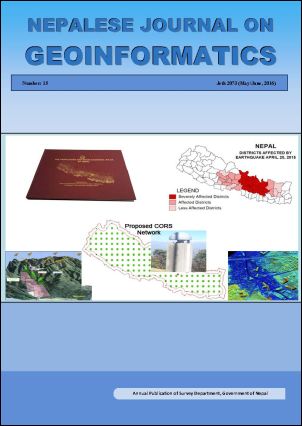Remote Sensing and GIS Application in Landslide Risk Assessment and Management
DOI:
https://doi.org/10.3126/njg.v15i1.51186Keywords:
Geo-hazard, landslide disaster, risk assessment, disaster management, RS, GISAbstract
Small as well as large scale landslides are common in the Himalayas, especially in the monsoon period. This natural disaster occurs in all the physiographic divisions of the Himalayas. Landslide is the result of a wide variety of processes which include causative and triggering factors. A complete landslide hazard assessment requires an analysis of these factors leading to instability in the region. Therefore, there is a need of multidisplinary studies of landslide hazards, which combines geology, hydrogeology and, geomorphology. The landslide risk is directly associated with the development activities, which will increase with increased
urbanization and development, continued deforestation in landslideprone areas, increased precipitation and seismic activity. In order to reduce the landslide risk, it is necessary to understand the underlying the processes, study the impact of landslides on the socioeconomic development of the affected areas, prepare landslide hazard zonation maps to minimize the risk involved in developmental schemes, evolve a methodology for mitigation and control measures, monitor change in land use pattern and landslide occurrence, establishing early warning system and development landslide 'databank' on national level and identify potential landslides zones and prepare population maps of the critical areas.




